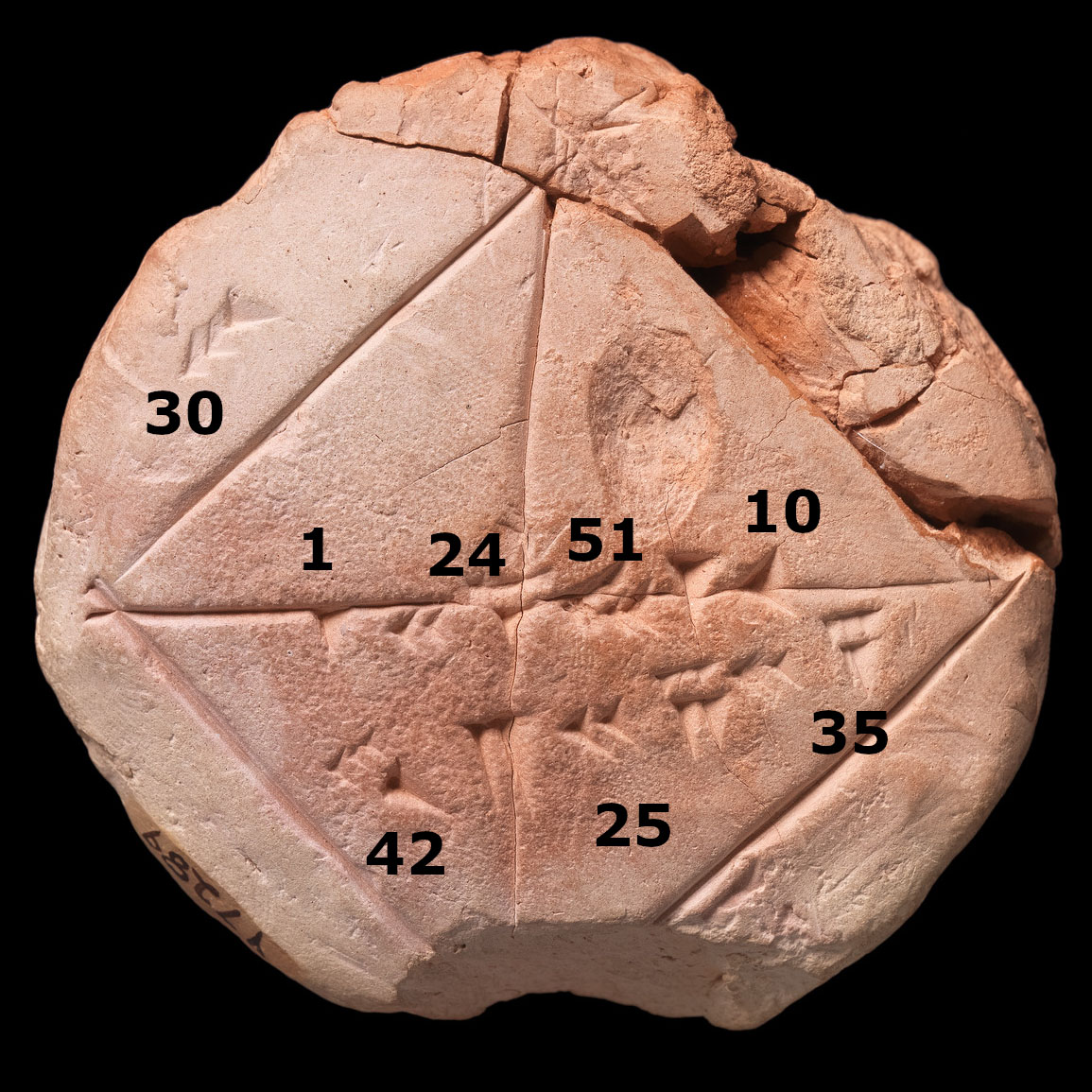Example
Input: 420
Output: 20.493901531919196
The square root of a number S is denoted $\sqrt{S}$ with the property that $\sqrt{S} \times \sqrt{S} = S$. It's easy to calculate for square numbers, like $3 \times 3 = 9$ so $\sqrt{9} = 3$. For other numbers it's not as easy but the ancient Babylonians seemed to know how to calculate them pretty accurately (see the figure and caption).
We have no idea how they calculated square roots so accurately, but a method they might have used has been called the Babylonian method. The basic idea is to start with an initial guess $x_0$ for $\sqrt{S}$. Then we can keep improve on this guess: if our current guess, $x_n$, is an overestimate to $\sqrt{S}$ then $S/x_n$ will be an underestimate and vice versa, so averaging the two should produce a better guess: $$ x_{n+1} = \frac{1}{2} \left( x_n + \frac{S}{x_n} \right) $$ We can use this formula to calculate better and better guesses. Given a number $S$, calculate and return its square root using the Babylonian method.

Input: A number $S \ge 0$.
Output: The square root of $S$ approximated using the babylonian method. Your answer should be accurate to 10 significant figures. That is, it should be correct to within 1 part in 10 billion, or the relative error should be lower than $10^{-10}$). You can calculate the relative error of your guess $x_n$ using $|x_n^2 - S| / S$ where $|\cdotp|$ is the absolute value (or abs) function.
| Difficulty | Timesink | ||
|---|---|---|---|
| Function | babylonian_sqrt(n) | ||
You must be logged in to view your submissions.
Let us know what you think about this problem! Was it too hard? Difficult to understand? Also feel free to discuss the problem, ask questions, and post cool stuff on Discourse. You should be able see a discussion thread below. Would be nice if you don't post solutions in there but if you do then please organize and document your code well so others can learn from it.